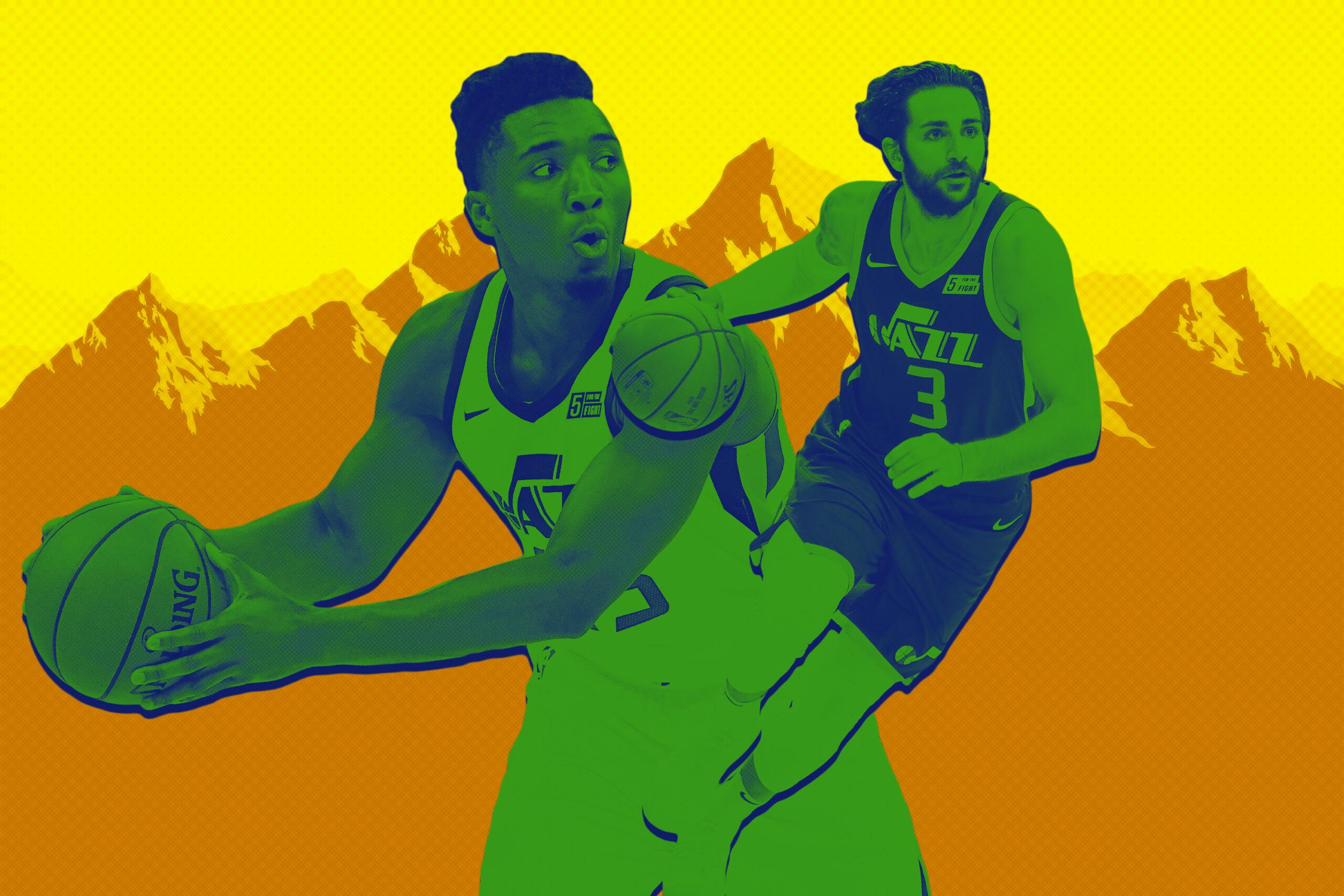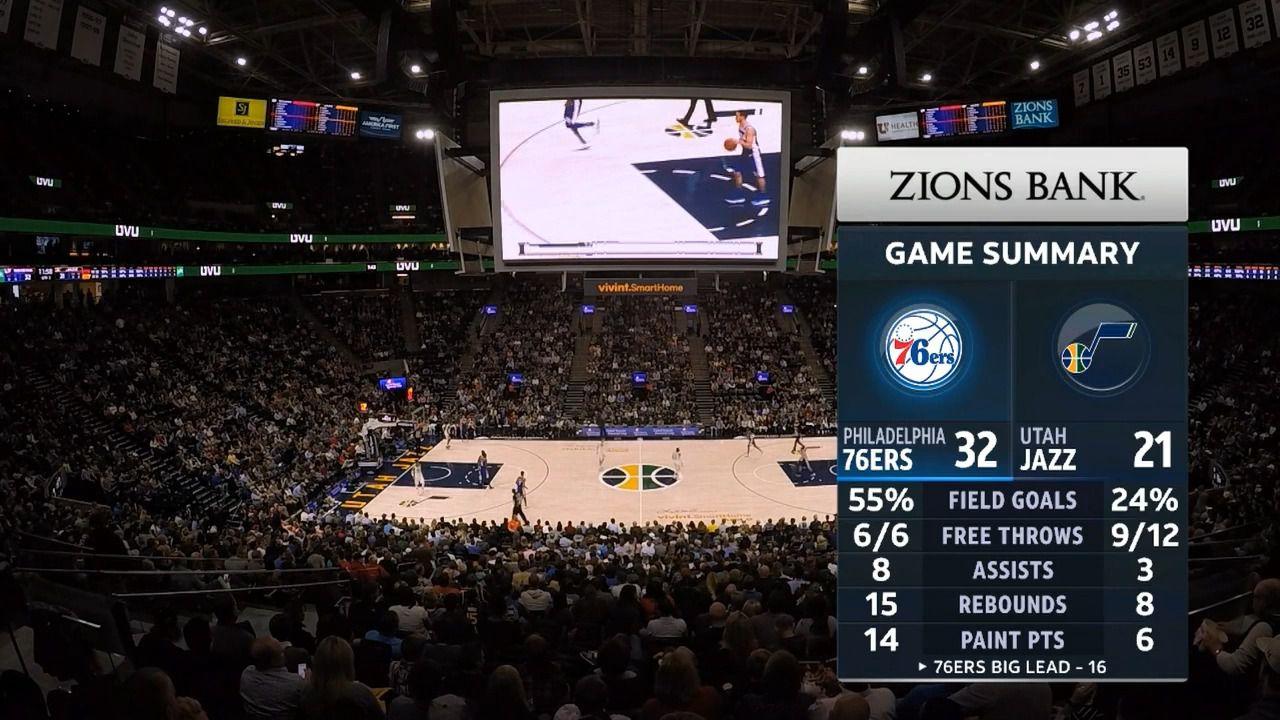
It started off as an interesting quirk. With the rose-colored glasses fans tend to enter seasons with, perhaps it even looked like the start of a truly egalitarian society rising from the ashes of Utah’s wounded playoff contender. But 11 games into the season, the delightful absurdity of Ricky Rubio—he who boasts a career average of 10.5 points per game, he who has never been remotely close to being even the third-best scoring option on any team in his previous six seasons—being the top scorer of the Utah Jazz has overstayed its welcome.
For a moment, the inked-up, sumo-knotted Ricky Rubio assumed a Chris Gaines–esque alter ego, successfully co-opting the stylings of a modern-day scoring point guard. He started taking more shots— for a while, he had the most field goal attempts on the team. His usage rate has increased by exactly 50 percent from last season. It was a clever bit of deception, a play on the perception and expectation that follows a veteran with a defined style. But the moment has passed. Defenses have taken note. Utah has lost three in a row. The novelty of it all has metastasized into a nightmarish reflection of what might be an impotent Jazz offense.
Utah is scoring 99.2 points per 100 possessions, which sits above the Sacramento Kings (95.2) and Chicago Bulls (94.2), two teams functioning at sub-NBA levels, for the worst offense in the league. Tuesday’s 104-97 loss to the Sixers felt like rock bottom. Here’s what the first quarter looked like:

It didn’t get any better.
Rubio and rookie backup/savior-in-waiting Donovan Mitchell combined to shoot 7-for-37 from the field in a game where the Jazz shot 30.3 percent as a team. The team’s performance from the field might’ve been enough to induce flashbacks to the 25-win team from 2013-14 that clung to a tentative 23-year-old Gordon Hayward as their way out of the morass. Even that team had a higher offensive rating (100.6) than the current iteration.
Not to pick the scab, but Hayward’s development in times of hardship and the star power he attained in his final season as a Jazzman highlight a few of the issues plaguing this current iteration. Hayward entered the league as a player with versatile potential, but the player he became was largely a matter of being attuned to the needs of the team around him. His growth as a shooter, an off-ball cutter, and an on-ball pick-and-roll handler all emerged from team need. His development aligned in lockstep with the Jazz trajectory because it had to. Even when Rudy Gobert became more central to the team’s identity, Hayward was the through line in all of the team’s offensive motifs. While the defensive framework remains elite, starting the offense back up from ground zero—with two brand-new point guards—was always going to be a challenge.
Hayward was evolution at work. So far this season, it appears as though the Jazz are fighting against nature. The Jazz have the second-worst turnover rate in the league, and coach Quin Snyder has an early diagnosis: The team is “putting guys in positions that aren’t their strengths.” It’s easier said than solved. Rubio is the perfect case study. In an ideal setting, Rubio is playing on a spread floor at high velocity, where there is just enough frenetic action for Rubio to bullet a pass between the opponent’s blind spots. Like his forebear in Jason Kidd and his descendant in Lonzo Ball, Rubio’s effectiveness is derived from the speed of his internal processing, not necessarily his physical athleticism. Finding those gaps is his forte. Unfortunately, the Jazz are a deliberate holdout of the NBA’s small-ball age, and it’s impeding Rubio’s vision. Rubio has shared the floor with both Gobert and Derrick Favors for over half of his time on the court. The Jazz customarily play basketball games with a razor-thin margin for error: possessions are intentionally limited, and spacing is tight. Rodney Hood’s preordained coming-out party has gotten off to a poor start; Joe Ingles is shooting the 3 about as well as possible, but his production is almost entirely dependent on the flow of the game. Rubio has been the only consistent source of shot creation in the starting lineup.
As a result, Rubio’s been forced to take what the defense gives him. The Spaniard may now play ball where the pick-and-roll was mastered, but with such an unprecedented need for his scoring, opponents are getting exactly what they want out of those plays. Rubio is shooting over 45.9 percent on 61 attempts as a ball handler in the pick-and-roll, which is frankly astounding for a career 37.6 percent shooter. What’s troubling is only six of those attempts have come from 3. Teams have historically gone under the screen for Rubio, and that hasn’t changed, even as he’s become more aggressive with his shot. If anything, his willingness to shoot has only pushed Rubio further into the throes of the defense’s game plan: force him into rhythm jump shots in the dreaded midrange. Rubio’s shooting 48 percent from the midrange, but the results are beside the point.
Here, the Rockets—who as a team have attempted two more midrange jumpers this season than Rubio has himself—goad Rubio into pulling up for a 15-footer by attaching both the handler and roll defender onto Gobert, and leaving an acre of land open on the left side:
Rubio’s unique predicament with the Jazz is what shades the fan enthusiasm for Mitchell with greater detail. The rookie adds elements of power and explosiveness to a Jazz backcourt that will forever be in the shadow of John Stockton, who didn’t possess either. He’s also a perfect proxy for the fan base’s collective hype and anxiety.
Mitchell is an outline at this point: He flashes glimpses of Damian Lillard’s game in the body of Marcus Smart. On his best nights, he looks like the release valve the team desperately needs; though he hasn’t yet settled into the nuances of the pick-and-roll at the NBA level, Mitchell has shown the ability to generate baskets purely on his one-on-one ingenuity. On his best nights, he looks like exactly what Snyder (and Jazz fans) needs him to be. He just isn’t ready yet. Mitchell followed a five-game stretch in which he averaged 20 points on 46 percent shooting, 3.4 rebounds, two assists, and 1.6 steals with a 3-for-21 performance against the Sixers, and even before that implosion, his shooting numbers have been subpar. But the numbers are irrelevant.
He’ll get every opportunity to chuck the ball: Mitchell is on pace to attempt more field goals per 100 possessions than Joel Embiid in his rookie season, or any rookie of the past 29 years, for that matter. Snyder doesn’t really have a choice: Allowing Mitchell to discover his outer limits with impunity is not only an investment in the future—it’s a good-luck dice roll on the present. Because hoping that Ricky Rubio, one of the worst shooting starters in NBA history, can continue to keep the team afloat on offense isn’t an option. It’s a death wish.

